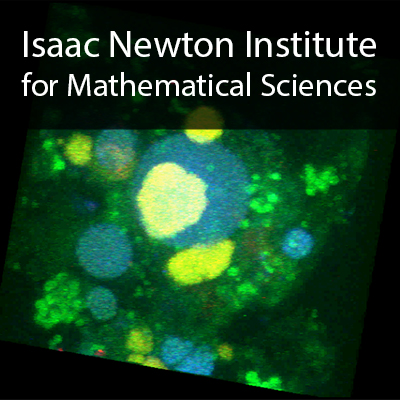Contributed Talk 5: Successive range expansions of interacting microbial populations promote spatial diversity
14 mins 58 secs,
27.38 MB,
MP3
44100 Hz,
249.8 kbits/sec
Share this media item:
Embed this media item:
Embed this media item:
About this item

| Description: |
Goldschmidt, F (ETH Zürich)
Tuesday 28 October 2014, 15:00-15:15 |
|---|
| Created: | 2014-10-29 17:24 |
|---|---|
| Collection: | Understanding Microbial Communities; Function, Structure and Dynamics |
| Publisher: | Isaac Newton Institute |
| Copyright: | Goldschmidt, F |
| Language: | eng (English) |
| Distribution: |
World
|
| Explicit content: | No |
| Aspect Ratio: | 16:9 |
| Screencast: | No |
| Bumper: | UCS Default |
| Trailer: | UCS Default |
| Abstract: | Succession of species is a process that is widespread in nature. Succession occurs when a pioneering species that expands into new territory is followed by a secondary species that depends on the change in the formerly pristine environment caused by the primary species. It is known that when species expand their territory, genetic drift leads to a reduction of diversity in this species. On the other hand was recently shown that interactions between species, like mutualistic dependencies, can oppose genetic drift during simultaneous expansion. However, it remains unclear how genetic drift affects diversity during successive expansions of interacting species. Our main questions are two-fold; first, can a temporally segregated interaction can oppose genetic drift during the succession and if this affects mainly the secondary or also the primary pioneer?
To address our questions, we constructed a system of two syntrophic bacteria that undergo successive range expansions. The producing strain degrades a parent substrate into an intermediate, which is then excreted. The consuming strain then consumes the secreted intermediate. We manipulate the interaction between the two strains from commensal to a non-obligate mutualism by changing the reactivity of the intermediate using the pH (i.e., the toxicity of the intermediate increases as the pH decreases). We found that the producing strain forms a regular wave front, while the consuming strain, which has to penetrate the biofilm of the producing strain, forms dendritic structures with fractal properties. There are two processes that oppose the diversity reducing effect of genetic drift during the successive expansion. First the number of expanding dendrites is higher at non-obligate mutualistic conditions. This process maintains the initial diversity. Second the degree of dendritic branching is higher at commensal conditions. Branching generates new spatial diversity by splitting up the populations into small sub-populations. In short we find that successive expansion promotes diversity by maintenance of pre-existing diversity and generation of new diversity during the expansion. |
|---|---|
Available Formats
| Format | Quality | Bitrate | Size | |||
|---|---|---|---|---|---|---|
| MPEG-4 Video | 640x360 | 1.93 Mbits/sec | 217.07 MB | View | Download | |
| WebM | 640x360 | 846.39 kbits/sec | 92.78 MB | View | Download | |
| iPod Video | 480x270 | 521.96 kbits/sec | 57.15 MB | View | Download | |
| MP3 * | 44100 Hz | 249.8 kbits/sec | 27.38 MB | Listen | Download | |
| Auto | (Allows browser to choose a format it supports) | |||||

